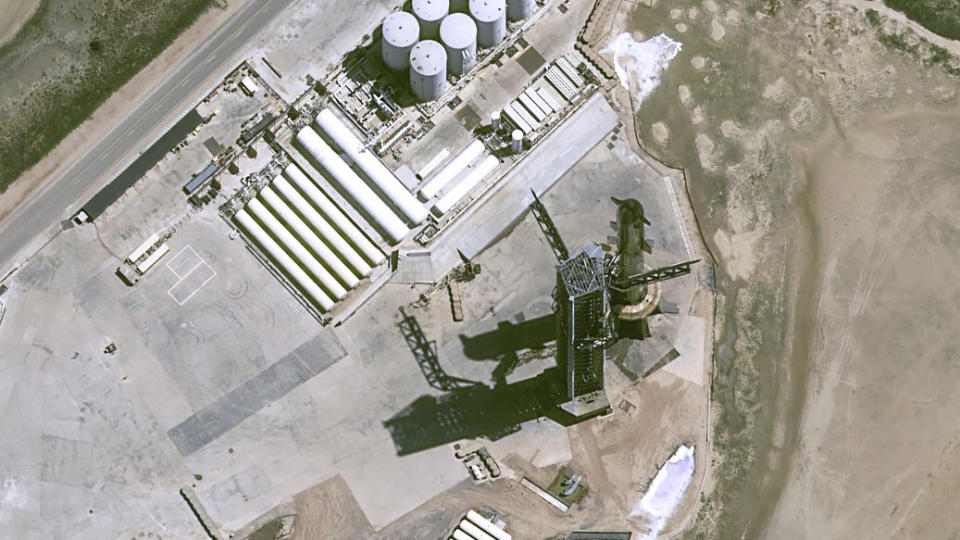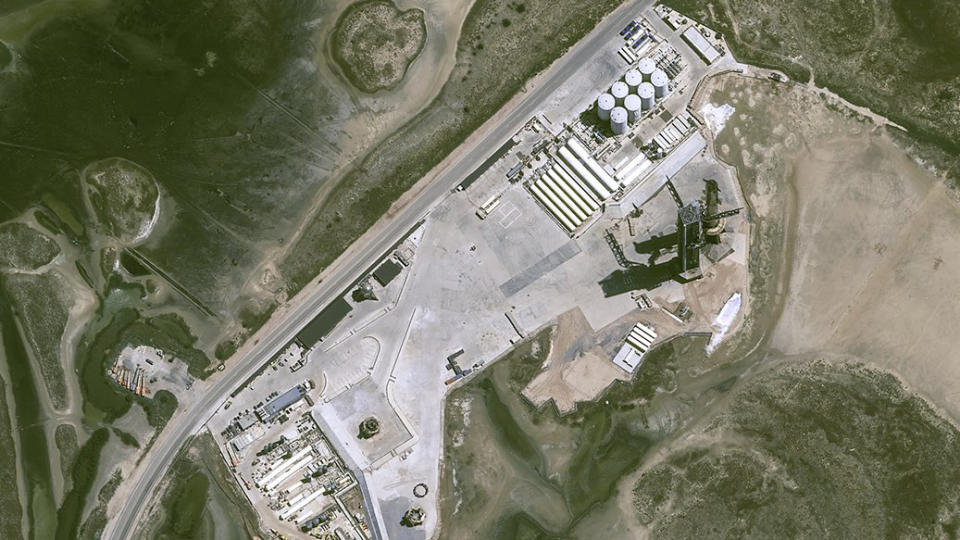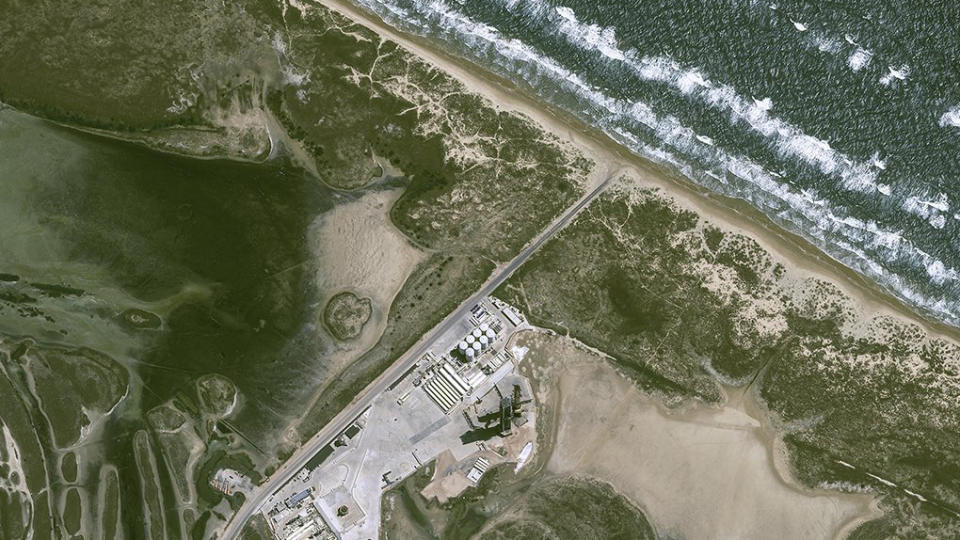SpaceX Starship's debut launch attempt seen from space (satellite photos)

An American weather satellite witnessed the semi-successful debut launch of SpaceX's Starship megarocket from space.
The GOES-16 satellite operated by the U.S. National Oceanic and Atmospheric Administration (NOAA) observed today's (April 20) Starship launch attempt from its perch in geostationary orbit about 22,000 miles (36,000 kilometers) above Earth. Satellites at this altitude circle our planet at a velocity that matches the speed of the planet's rotation, which means that GOES-16 was able to enjoy the spectacle without haste as it has a constant view of the U.S. East Coast.
The satellite was able to clearly distinguish the enormous cloud of smoke that enshrouded the launchpad in Boca Chica, Texas, as the 33 engines of Starship's Super Heavy first stage ignited. The view from space then shows the smoke dispersing above the Atlantic Ocean.
Related: Relive SpaceX's explosive 1st Starship test flight in these incredible launch photos
After successful liftoff, Super Heavy continued to fire for about three minutes. But as the first stage was set to separate from the Starship upper stage, something went wrong and the entire stack began to tumble instead, eventually exploding in a series of fireworks. In the GOES-16 timelapse, a small white spot can be seen separating from the cloud shortly after liftoff and descend toward the blue ocean surface.
"Even though the @SpaceX starship didn't make orbit, it still provided one heck of a fireworks show," British Earth-observation scientist Simon Proud, who shared the images on Twitter, said in a tweet.
The weather forecasting craft also captured an infrared view of the landmark test launch, revealing the temperature signature of the rocket's engines as they fired up.

The infrared sequence goes from a uniform purplish/red colored background to then showing a brighter red dot after the first stage ignition. Eventually, the red dot turns green as the engines become visible as the rocket ascends, highlighting the extremely high temperature of the fuel-burning process. The bright spot first moves upward, but then suddenly changes direction as the rocket begins its tumble toward the ocean, and eventually disappears.
The U.S. National Weather Service (NWS) posted its own version of the GOES-16 imagery, highlighting where in the image to look for the rocket's condensation trail, the trail's shadow and even the flash of the rocket's "rapid unscheduled disassembly" as SpaceX dubbed the failure.
"Three neat features captured on GOES satellite imagery this morning during the first flight test of a large rocket from South Texas," NWS said in a tweet. "1) The rocket's condensation trail, 2) Shadow of the condensation trail 3) Lightning mapper capturing the rocket's Rapid Unscheduled Disassembly"




Related stories:
— The best SpaceX Starship merch on Amazon
— SpaceX Starship shines on pad ahead of 1st orbital launch (photos)
— Every SpaceX Starship explosion and what Elon Musk and his team learned from them (video)
Other satellites were able to photograph Starship launch preparations as technicians readied the 394-foot-tall (120 meters) rocket for the debut flight. The Pleiades Neo satellite of the European aerospace company Airbus took a series of images zooming onto the launch pad and the rocket towering over it.
Although Starship failed to reach orbit during the debut launch attempt, SpaceX said it considered the flight a success and will have another go in a few months.
Follow Tereza Pultarova on Twitter at @TerezaPultarova. Follow us on Twitter @Spacedotcom and on Facebook.

